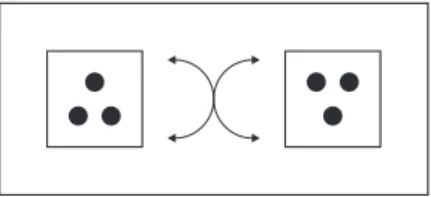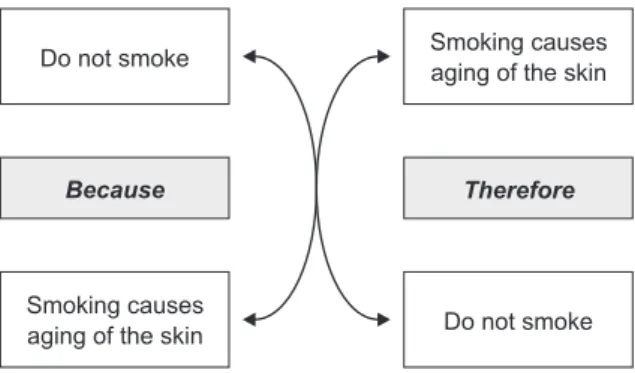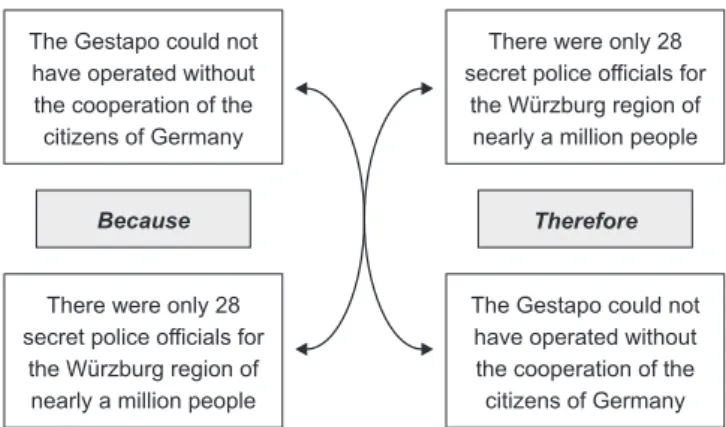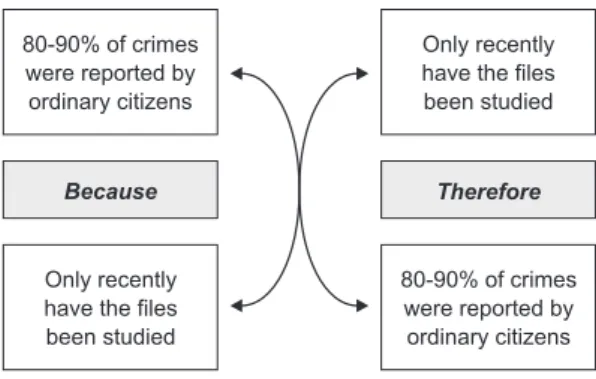Arthur Chapman
2ABSTRACT
This paper discusses the nature of argument and its role and importance in historical learning. The paper describes pedagogic strategies developed to help school pupils understand what argument is, model how arguments work and think about how arguments can be evaluated. These strategies are explained as generic critical thinking strategies and the article then demonstrates how these strategies can be applied in history education contexts. The strategies that the article describes aim to make the logical relationships that are embodied in arguments clear to students through the use of analogies and active learning strategies that seek, first, to enable students to represent logical relationships in concrete ways and, second, to help students manipulate and explore these relationships.
Keywords: history education; historical learning; argument.
RESUMO
Este trabalho discute a natureza do argumento e seu papel e importância na aprendizagem histórica. Este trabalho descreve as estratégias peda-gógicas desenvolvidas para auxiliar os alunos a compreender o que é o argumento, a estabelecer modelos de como os argumentos funcionam e a pensar como os argumentos podem ser avaliados. Estas estratégias são explicadas enquanto estratégias genéricas de pensamento crítico; e o arti-go demonstra, então, como elas podem ser aplicadas em contextos de edu-cação histórica. As estratégias descritas objetivam tornar claras, para os alunos, as relações lógicas incorporadas pelos argumentos, através do uso
understanding historical argument
1Levando a sério a perspectiva do outro:
compreendendo o argumento histórico
1This paper was originally published in Euroclio Bulletin 28 (Euroclio: The Hague) in 2010.
The author is grateful to Euroclio for granting permission to republish this article here.
2Reader in Education, Edge Hill University, St Helens Road, Ormskirk, Lancashire, L39 4QP,
de analogias e estratégias de aprendizagem ativa. Estas procuram, primei-ramente, possibilitar que os alunos representem relações lógicas de maneira concreta e, em segundo lugar, auxiliar os alunos a manipular e explorar estas relações.
Palavras-chave: Educação histórica; aprendizagem histórica; argumento.
Perspective in History / History in perspective
Perspective taking can mean many things and most of them are metaphorical. Literally and etymologically speaking, perspective is a matter of optics that relates to how things appear to inter-relate in a visual field relative to the position of a viewer. Literally speaking, perspective plays no role in historical knowing since historical knowledge is not perceptual: the past, by definition, does not exist and clearly, therefore, cannot be experienced, sensed or seen (Megill, 2007). Metaphorically speaking, of course, history is all about perspective. Metaphorically, a ‘perspective on the past’ is a form of short-hand for the ways in which the concepts, questions and practical interests that we bring to the study of the past shape the conclusions we draw. It is worth emphasising, however, that an historical perspective is always a conceptual and cognitive matter and not a perceptual one, since, by emphasising this we draw attention to important aspects of historical thinking that students need to grasp and develop.
It seems to me, then, that perspective taking necessarily involves thinking. We cannot think effectively without arguing. We can best improve our thinking by thinking about the tools that we use to think, or, through metacognition. This paper aims to make a modest contribution to the task of developing the pedagogy of historical argument.
History and argument
History is many things – it is something that we are ‘in’ for example and we talk of it shaping us, delimiting and enabling our options and so on. History is also story – histories are the stories that we tell ourselves about who we are, where we have come from and usually, since you cannot tell a good story about the past without a vision of what it all means, where ‘we’ are going (Rüsen, 2005).
History is more than a process we are living in and the stories that we tell about time: history is a discipline and a form of knowledge. To count as historical knowledge, the stories that we tell ourselves must bear some relationship to historical sources (the archives of the past) and to the factual claims that we create by interrogating archives (Megill, 2007). Archives do not speak for themselves, of course, and they have to be interpreted. Histories are made and interpretations are constructed through historical argument. It is arguments that state and establish our claims about the past on the basis of the archival traces and remains. Understanding history does not just involve understanding perspectives, or understanding the concepts, questions and practical interests that people bring to the study of the past, therefore: understanding history also and inevitably means understanding historical argument.
The remainder of this article describes two critical thinking strategies that I have found useful in helping students think about historical argument. I will describe them first generically (as critical thinking strategies) and then show how they can be applied in a historical context by exploring a specific historical example.
What is an argument?
“An argument is a connected series of statements intended to establish a proposition.”
Monty Python Argument Sketch, 1974.
(an excellent illustration of both argument and dispute is the sketch cited above which is readily available online). To understand how argument works you have to understand the constituent parts of arguments and how they fit together. How can we get students thinking logically?
An argument, any argument, is an attempt to establish something and this thing is called a conclusion. The conclusion of an argument can be that you should do something, that you should believe something, that you should like something, that you should explain something in a particular way, and so on.
Arguments do not simply consist of conclusions, however: they consist also of reasons proposed to establish conclusions. To understand an argument, therefore, you need to understand (a) what it is trying to establish (or what its conclusion is), (b) what reasons are offered in order to establish that conclusion and (c) how effectively the two fit together (van den Brink-Budgen, 2000).
Reasons, conclusions and reversibility
A useful exercise that can help students grasp what a reason is and what a conclusion is in any particular argument, involves breaking the argument down into parts. It is best if arguments are literally cut up so that the parts can be moved around and used to physically model how an argument is put together. As well as the argument parts the exercise requires that ‘conclusion words’ (‘therefore’ and ‘because’) be available on cards also. These words can be words, or, even better, symbols (see Figure 1).
Figure 1 - “Therefore” and “Because” symbols. One card can serve as both symbols and simply
needs to be rotated to change meaning.
(B) It is apparent that this is not an argument
‘Therefore’ and ‘because’ are also reversible quite literally in notational form (the symbol for ‘therefore’ when turned upside down becomes the symbol for ‘because’).
It is apparent in Figure 2(A) that we have correctly identified the reason and the conclusion. In the ‘therefore’ version the reason comes first and the conclusion second and things are the other way around in the ‘because’ version and, more importantly, it is apparent that the reason does in fact support the conclusion. It is apparent that this is not the case in Figure 2(B). This exercise, then, works as a discovery procedure: by arranging cards and concluding words you can identify when you do and when you do not have the elements of an argument correctly identified.
Figure 2 - Reversability as a way of identyfying reasons and conclusions.
Alternate conclusions and assumptions
Once students are clear about what an argument’s reason(s) and conclusion(s) are, they can begin to evaluate the argument.
There are many ways of doing this and I will simply suggest two. The first is the ‘alternate conclusion’ test and the second relates to spotting and questioning assumptions.
Alternative conclusions
If it is possible to derive a different conclusion from the reasons that an argument depends upon then the argument is clearly a weak one. This can easily be done for the example in Figure 2. If the only reason not to smoke is that smoking ‘causes aging of the skin’ (which is clearly not true even though it is the only reason we are given here) then it follows that there is no reason why old people (or people with aged skin) should not smoke: they already have aged skin and therefore no cause to be concerned by the reason given.
Spotting and Questioning Assumptions
Assumptions are reasons that are taken for granted and not explicitly stated in an argument (Chapman, 2006). In English the word “assume” contains a pun that draws attention to the problem with assumptions. An assumption can make idiots of us all if we do not examine and test it: the word “assume” breaks down into “ass-u-me” and we can say that “assumptions” can make an “ass” of “you” and “me”. It is easy to get students spotting assumptions and the following is a useful method for achieving this.
Present students with a simple argument and ask them to
1. identify its logical structure (What is the conclusion and what reasons are offered to support it?) and
2. identify any assumptions that have been made.–
The following is a good example of a simple argument that can be fruitfully analysed in these ways:
Watch out!
There’s a polar bear behind you.
behind you to be able to attack you, that there are no obstacles between your back and the polar bear, that you are not attempting suicide, and so on. Some or all of these additional unstated reasons may not be true and the argument may, therefore, be a very weak one whose conclusion you should ignore.
Applying argument analysis to History
Modelling an argument
Figure 3 contains material from a BBC documentary that is very popular with teachers and students in the UK because it succeeds in presenting an interesting but also a theoretically informed introduction to the history of Nazi Germany. The passage in the figure concerns the Gestapo and also relates to historical controversies about how the Gestapo and the whole Nazi regime should be interpreted. In this passage an historian associated with “structuralist” arguments about Nazism makes his case. The documentary has the advantage of presenting the argument in a very clear and simple form that allows its assumptions and logic to be investigated.
Narrator:
“Only recently have the [Gestapo] files[in Würzburg] been studied and a surprising picture emerges of how the Gestapo actually functioned. To start with, far from there being a Gestapo officer on every street corner, there were only 28 secret police officials for the entire Würzburg region of nearly a million people.
Historian (Professor Robert Gellately):
“I think the Gestapo could not have operated without the cooperation of the citizens of Germany. By that I mean it really would have been structurally impossible for them to do so. There were simply not enough Gestapo officials to go around. Somewhere between 80-90% of the crimes that were reported to the Gestapo came from ordinary citizens. The main job for the Gestapo was sorting out the denunciations. This seems to have been their preoccupation.”
Rees (1997)
This short passage contains a large number of propositions and these are modelled in Figure 4.
Figure 4 - Propositions contained in the documentary narration.
If the propositions in Figure 4 are cut up and if word cards for ‘therefore’ and ‘because’ are made available students can rapidly make progress working out which of these statements must be the conclusion.
1. Only recently have the Gestapo files in Würzburg been studied
2. A surprising picture of how the Gestapo operated in Würzburg emerges when the files are studied.
3. The Gestapo were thin on the ground rather than numerous
4. There were only 28 secret police officials for the entire Würzburg region of nearly a million people.
5. The Gestapo could not have operated without the cooperation of the citizens of Germany
6. There were simply not enough Gestapo officials to go around
7. Between 80-90% of the crimes that were reported to the Gestapo came from ordinary citizens
8. The main job for the Gestapo was sorting out the denunciations.
(B) It is apparent that this is not argument
Evaluating the argument
Figure 5 (A) contains a fair summary of one key argument made by Professor Gellately in this film clip (it is worth noting that, as one would expect with a film clip, the arguments are oversimplified here). How can the argument be assessed? Are alternative conclusions possible and what assumptions, if any, are made?
It is clear that quite a lot is being assumed in this argument. It is assumed, and this seems to me to be a critical weakness in the argument, that it was known at the time that there were only 28 Gestapo in the region in question. This seems to be a fairly fatal assumption to make (without further evidence being offered) given that the Gestapo were by definition the “secret state police” and an organisation whose membership lists were not in the public domain. One could equally conclude that we cannot say anything about the knowledge of ‘the average German’ about the size of the Gestapo simply on the basis of what we now know about the actual size of the police force. Indeed, we might perhaps want to claim that the Gestapo were clearly very effective indeed at terrorising people: a key point about terror is that it involves the unknown and fear of the unknown. Further assumptions have also been made. What, for example, is the assumed definition of ‘cooperation’ here? Can I be said to cooperate with you if I consent to what you ask me to do (or what I think you expect me to do) out of fear or would another word be more appropriate for my actions?
Figure 6 contains examples of 18-19 year old student thinking about this issue from groups of students who have been taught to think critically about historical argument.
Figure 6 - Student arguments about the Gestapo.
It is apparent, in the first and last examples in Figure 6, I think, that these students are aware that assumptions are made in historical arguments and that
Example 1 (Student interview)
Well evidence can be interpreted in different ways, for example the Gestapo in Germany was very short numbered and some people could say they could still terrorise because there’s people in camps, but Gellately said well they can’t because it’s structurally impossible. People have different opinions and will interpret evidence in different ways so opinions can be different.
(Chapman, 2009, p.166)
Example 2 (Student online debate)
It is clear that the Nazis did exercise terror, although evidence would suggest that it was applied only where absolutely necessary with the consent of the people as it would not have been structurally possible without their approval. Gellately commented that in some areas of Germany there were as few as 32,000 Gestapo to a population of millions; therefore without the denunciations from ordinary Germans around 80% of arrests by the Gestapo would not have been made…
(Cooper and Chapman, 2009, p.141)
Example 3 (Student online debate)
It is clear that the Nazi state operated under a system of terror, implemented from the start by Hitler…
The oppressive nature of the police force within the Nazi state also led to a climate of fear. As Michael Burleigh states ‘Terror both neutralised political opponents and repressed the wider population through a more pervasive insecurity’…
While it could be argued that denunciations are an example of consent for the Nazi state, this is highly unlikely. Denunciations are clearly an example of the German people hiding from the Nazi authorities, it is likely that the average German person believed that by telling on neighbours around them, they themselves would be cleared of any suspicion and would not be arrested and sent to the concentration camps.
these assumptions are open to question. The first student sees that alternative assumptions are possible. The last student is clearly able to go beyond that position, to start to engage critically with the perspective represented by arguments like Gellately’s and to develop alternative arguments based on different assumptions.
The key point to note about all these student examples, I think, is that they clearly understand that history involves argument. The first student notes that different conclusions can be drawn from the same data. The second student simply rearticulates Gellately’s argument. The third student does more than both the other two and actively challenges conclusions that have been drawn from data and offers alternative conclusions of their own.
Conclusions
History is ill-served if students treat it as merely a matter of opinion. Of course we should respect other peoples’ opinions but if your claims about the past and my claims about the past are simply treated as opinions to which we are both equally entitled then, it seems to me, history is trivialised.
Taking history seriously involves understanding that history is about argument. You may be entitled to your opinion but there is no reason why I should respect your argument. I should of course respect your right to argue and the only way to truly respect that is to argue with you in a focused and logical way. In at least one sense, taking the perspective of the other seriously must mean being prepared to analyse it robustly and challenge it using logical means. I hope that the ideas that have been proposed here may do something to enable students to develop arguments. The proposal will only truly have been successful, however, if my assumptions are probed and my arguments are challenged. That, of course, is how the discipline of history thrives and, sometimes, progresses.
REFERENCES
CALLINICOS, A. Making History: Agency, Structure and Change in Social Theory. Cambridge: Polity Press, 1988.
CHAPMAN, A. Towards an Interpretations Heuristic: A case study exploration of 16-19 year old students’ ideas about explaining variations in historical accounts. Unpublished EdD Thesis, Institute of Education, University of London, 2009.
COOPER, H. AND CHAPMAN, A. (Eds.) Constructing History 11-19. Los Angeles, London, New Delhi, Singapore and Washington: Sage
LEE, P. J. ‘Putting principles into practice: understanding history’, in M.S. Donovan and J.D. Bransford (Eds.) How Students Learn: History in the Classroom. Washington DC: National Academies Press, 2005.
MEGILL, A. Historical Knowledge / Historical Error: A contemporary guide to practice. Chicago: University of Chicago Press, 2007.
REES, L. The Nazis: A Warning from History. London: BBC, 1997.
RÜSEN, J. History: Narration, Interpretation, Orientation. New York and Oxford: Berghahn Books, 2005.
STRADLING, R. Multiperspectivity in history teaching : a guide for teachers. Council of Europe van den Brink-Budgen, R. (2000) Critical Thinking for Students. Oxford: How to Books van den Brink-Budgen, R. ‘The creativity of critical thinking,’ Teaching Thinking, Spring 2002, 2003, pp.28-32



